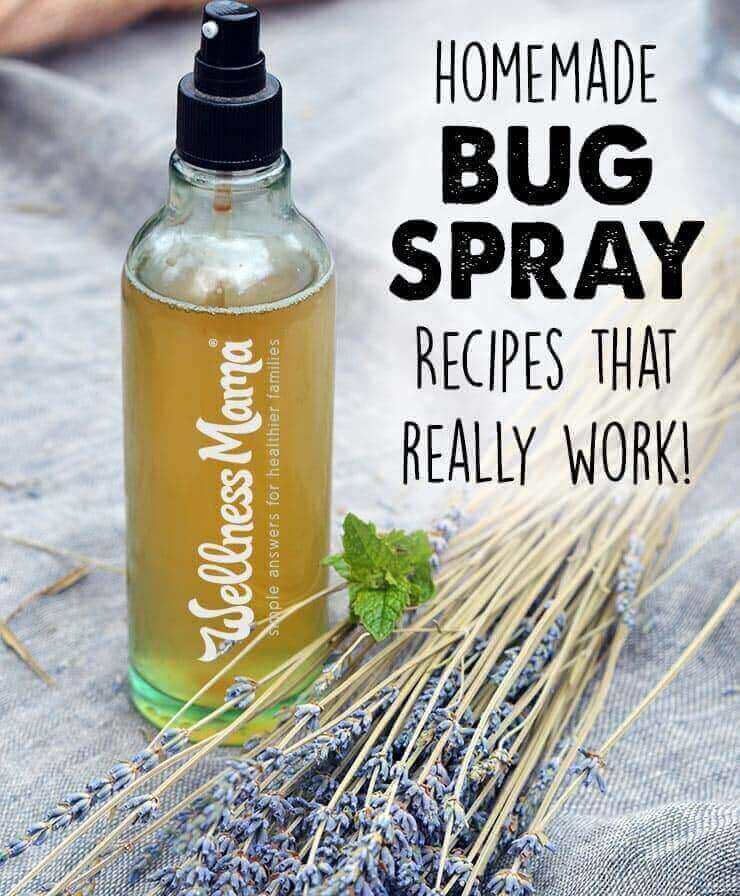All-Natural Homemade Bug Spray Recipes That Work

Every year as warmer weather approaches, I make several homemade products for summer including my homemade sunscreen and these homemade bug spray recipes.
I don’t actually use sunscreen often because it limits Vitamin D production and I prefer to eat my sunscreen instead. This homemade bug spray recipe on the other hand, unfortunately gets daily use where we live!
Why Homemade Bug Spray?
At my house, we joke about mosquitoes being the size of birds, and they certainly do seem to come in flocks! Especially with small children who are prone to scratch mosquito bites, keeping them away is a top priority.
Also a priority is avoiding chemicals like DEET, which are present in many commercial insect repellents. According to Green Your Body:
One of the most widely used ingredients in store-bought conventional bug sprays for personal use is N,N-Diethyl-m-toluamide, or DEET, as it’s commonly known. DEET, which is designed to repel, rather than kill, insects. DEET is used by an estimated one-third of the US population each year.
Although DEET is approved by the US Environmental Protection Agency (EPA), it is a known eye irritant and can cause rashes, soreness, or blistering when applied to the skin. Additionally, DEET has been linked to neurological problems; according to the EPA, at least 18 different cases of children suffering adverse neurological effects, as well as the deaths of two adults, have been associated with DEET. Researchers at Duke University Medical Center have found that DEET causes diffuse brain cell death and behavioral changes in rats.
DEET has been shown to have a negative impact on wildlife and water sources in production and during use. DEET is toxic to birds and aquatic life. DEET has been found in approximately 75 percent of U.S. water sources, including the Mississippi River.
As with practically every household item, natural bug spray can be made inexpensively and naturally at home. (Some of our other favorites to make instead of buying are deodorant and toothpaste).
This recipe takes just seconds to mix up and can be varied based on what you have available. I’ve included several variations so you can try whichever one you have the ingredients for.
Essential Oil Bug Spray Recipe
This recipes uses essential oils, which are highly effective, but there are some concerns about putting these directly on the skin, especially on children. I prefer to use this recipe on clothing or gear instead of directly on the skin.
Homemade Bug Spray Ingredients
- Essential oils: choose from Citronella, Clove, Lemongrass, Rosemary, Tea Tree, Cajeput, Eucalyptus, Cedar, Catnip, Lavender, Mint
- Natural Witch Hazel
- Distilled or boiled Water
- Vegetable glycerin (optional)
Homemade Bug Spray Instructions
- Fill spray bottle (I used 8 ounce) 1/2 full with distilled or boiled water
- Add witch hazel to fill almost to the top
- Add 1/2 tsp vegetable glycerin if using
- Add 30-50 drops of essential oils to desired scent. The more oils you use, the stronger the spray will be. My personal favorite mix is: Rosemary, Clove, Cajeput, Lavender, Cinnamon and Eucalyptus. It works great and smells good too!




















